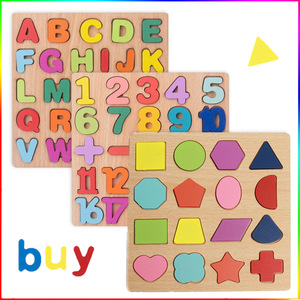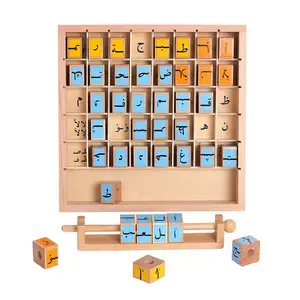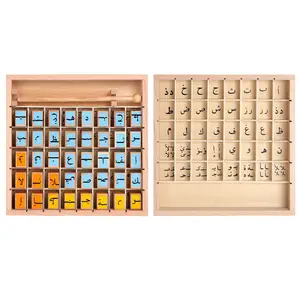(1004 products available)




















































































































































































Arabic alphabet games are designed to make learning the 28 Arabic letters fun and engaging. These games often incorporate interactive elements, visuals, and sounds to help learners recognize, pronounce, and write Arabic letters effectively. Here are some common types:
Letter Recognition Games
These games focus on helping learners identify and recognize the Arabic letters. They often involve matching letters with their corresponding sounds or images. Letter flashcard games, memory matching games, and letter sorting activities fall under this category.
Writing and Tracing Games
These games usually involve worksheets or digital applications that guide learners in writing and tracing Arabic letters. They often provide dotted lines or arrows to show the correct letter formation, helping learners develop their handwriting skills. Letter tracing apps and writing worksheets are examples of these games.
Phonics and Sound Games
These games are meant to help learners associate Arabic letters with their corresponding sounds. They often involve listening exercises, where learners have to identify the letter being pronounced or match letters to relevant words and images. Letter-sound matching games and auditory quizzes are examples of such games.
Vocabulary Building Games
These games usually focus on expanding the learners' Arabic vocabulary. They can include word puzzles, crossword puzzles, and word search games, all of which incorporate words that start with specific Arabic letters.
Interactive Apps and Online Games
Various interactive apps and online platforms offer a wide range of Arabic alphabet games. They often include quizzes, puzzles, and interactive lessons that adapt to the learner's skill level. These games are usually characterized by colorful graphics, animations, and rewarding systems to enhance the learning experience.
Board Games and Card Games
Board games and card games can be customized or purchased specifically for learning the Arabic alphabet. They usually involve moving pieces on a board or playing cards that require players to answer questions or complete tasks related to Arabic letters.
When choosing a letter-learning game for children, consider the child's age and developmental stage. Different games suit different age groups, so it's best to choose one that is appropriate for the child's level of development. For instance, preschoolers may benefit from games focusing on recognizing and writing Arabic letters. In contrast, older children may find it easier to read and write short Arabic words. Also, consider the medium in which the game will be played; it can be a board game, video game, mobile app, or even a card game. Some children may prefer one medium over another. Games with different difficulty levels are helpful because they allow a child to progress at their own pace. As the child masters the skills taught in the game, more challenging levels can be unlocked to keep the child engaged and motivated.
Look for games that use fun and interactive methods to help children learn Arabic letters. These include puzzles, matching activities, and quizzes. Such activities will keep the child entertained while learning. Educational content is essential for any letter-learning game. Ensure the game teaches Arabic letters effectively, using sound pronunciation, correct letter formation, and engaging activities that reinforce learning. Children, especially younger ones, are more likely to be motivated to learn if they see value in what they are doing. Therefore, the game should include rewards or incentives, such as virtual stickers, new levels, or unlockable content. These will encourage the child to keep playing and learning.
Choosing a game with a secure and child-friendly interface is essential, mainly if it will be used on mobile devices or computers. Look for games with simple navigation, age-appropriate graphics, and no ads or inappropriate content. Multiplayer options and social interactions in a letter-learning game can make learning more enjoyable for children. Through these features, children can play with friends or family members, compete in challenges, or collaborate on tasks.
Choose games that can be played for short periods. Games that take a long time to complete may cause fatigue or frustration. Such games should be avoided. Games that can be played in bite-sized sessions are more manageable for children and can be played at different times. Finally, parental involvement in the learning process is beneficial for children. Thus, select games that offer progress tracking or reports. These will help parents monitor their child's achievements and areas that need improvement.
Letter Recognition
Games that involve matching or identifying letters help in the recognition of Arabic letters. This is important in early literacy development.
Writing Skills
Activities that require children to trace or form letters assist in developing writing skills and proper hand coordination.
Vocabulary Building
Games that introduce new words and their meanings help in enhancing the children's vocabulary.
Pronunciation Practice
Interactive games that involve speaking or listening to the letters aid in correct pronunciation.
Spelling and Grammar
Games that involve forming words or sentences assist in learning the basics of Arabic spelling and grammar rules.
Interactive Activities
These activities include puzzles, quizzes, and matching games that are designed to keep the children engaged and excited.
Audio Support
The games come with audio support that includes correct pronunciation of the letters, which helps in learning and improving speaking skills.
Visual Aids
The games use visual aids such as colorful images, animations, and charts that help in capturing the attention of the children.
Progress Tracking
Some games have progress tracking features that monitor the child's performance and improvement over time.
Customizable Settings
The game settings can be customized to suit the child's learning pace and level of proficiency.
Child-friendly interface
The design of the game has a simple and easy to navigate interface that is tailored for young children. This prevents them from getting frustrated when trying to use the game.
Colorful Graphics
The game consists of bright and attractive graphics that capture the attention of the children and make the learning experience more exciting.
Engaging Animations
Animations are included to make the games lively and entertaining. This keeps the children glued to the games.
Intuitive Controls
The games use simple and easy to use controls that are designed for young children.
Arabic letter games are generally safe for kids. However, it is important to check the Arabic letter games for the following safety features:
Non-Toxic Materials
Arabic letter games should be developed with non-toxic materials. This prevents any harm if a child puts a game piece in their mouth. To ensure this, parents should search for games with an ASTM (American Society for Testing and Materials) certification.
Age Appropriateness
The Arabic letter games should be suitable for a child's age. Avoid games with small parts if a child plays with them. This is because they can be a choking hazard. Games with recommended age ranges by manufacturers should be prioritized.
Durability
The components of the games should be strong enough to handle rough play by kids. This includes sturdy game pieces, solid construction, and strong materials. This will prevent breakage and reduce the risk of injury.
Soft Edges
Game pieces and other components should have rounded or soft edges. This will reduce the risk of cuts and scratches if a child plays with the pieces.
Certifications
Look for certifications from the International Play Equipment Manufacturers Association or the Consumer Product Safety Commission. These certifications prove that the games have gone through safety testing.
Washability
Materials used in making the gaming pieces should be easily cleaned. This is because kids can be messy and spill food or drinks on the games. Cleaning the materials will reduce the risk of germs.
Educational Value
Arabic letter games should be developed to promote effective learning. The games should be engaging and interactive to keep the child's interest. In addition, they should have a structured approach to learning letters. This should include progressive difficulty levels and clear objectives.
What is the best way to introduce Arabic letters games to children?
Depending on the child's age and skill level, choose games that are age-appropriate. Incorporate the games into everyday activities for a more natural learning experience. Be it a digital game or a board game; ensure it is safe for children. Encourage kids to play in groups to promote interaction. Keep the learning fun by introducing different games regularly.
Can Arabic letters games be played on mobile devices and tablets?
Sure, they can. In fact, many Arabic letters games are specifically designed for mobile phones and tablets. Such games have touch-friendly controls and are optimized to fit on smaller screens to give users the best gaming experience.
How can Arabic letters games be used in conjunction with traditional learning methods?
Arabic letters games can be used to complement textbooks and worksheets by making learning more interactive and enjoyable. They can be used to reinforce lessons taught in the classroom or at home by providing additional practice and exposure to the Arabic alphabet.
Are there any specific features to look for in high-quality Arabic letters games?
Look for games with engaging graphics, educational content, and age-appropriate difficulty levels. The game should also have features such as progress tracking, multiple levels of gameplay, and interactive elements to enhance the learning experience.